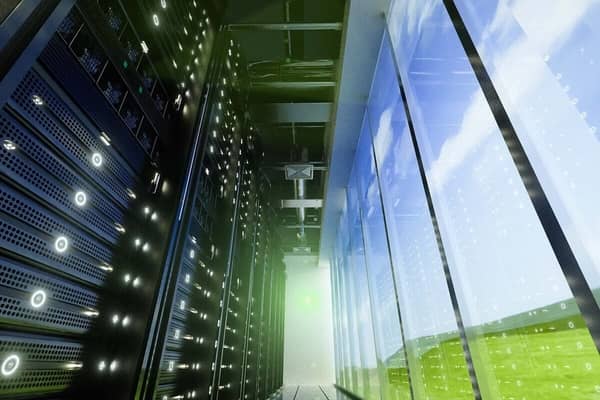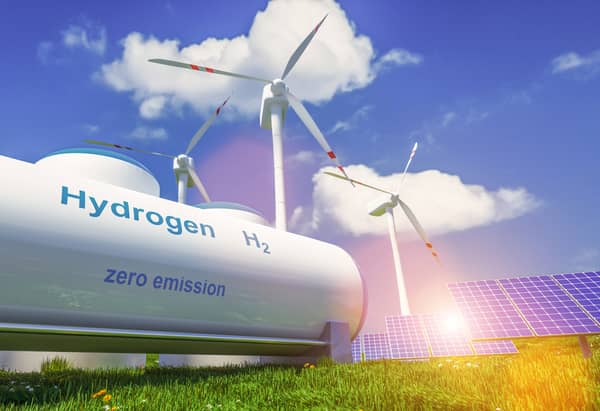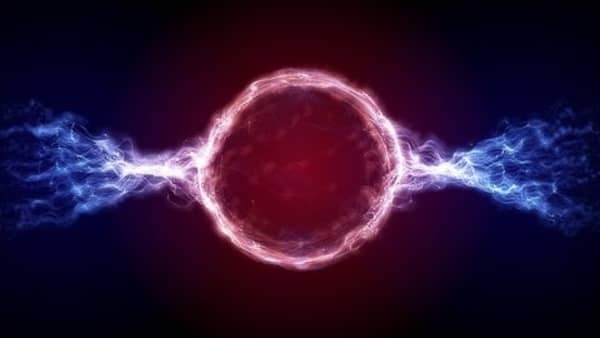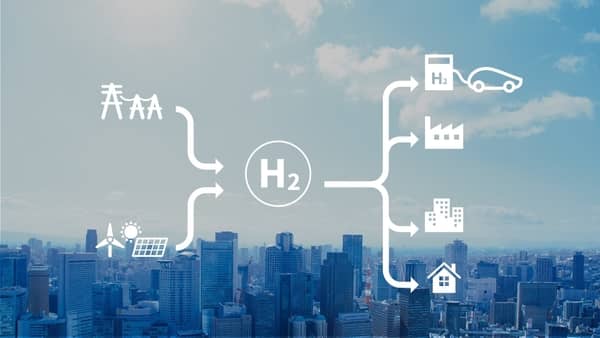
Why Choose Colocation America for Your Los Angeles Colocation Data Center?
February 9, 2022
What Is a Grid-Interactive Data Center?
February 16, 2022Green hydrogen has been looked at as the fuel of the future for several decades. Still, scientists and researchers are working on incorporating this more renewable form of hydrogen into today’s world’s energy usage. Certain large enterprise companies and a new global initiative lead the way to search for sustainability.

What is Hydrogen?
Various forms of hydrogen can be produced in several different ways. The industry categorizes the sources and processes by which hydrogen is made using a color system. Most hydrogen today is produced from fossil fuels. Brown hydrogen is made from coal through a process called gasification. Grey hydrogen makes up 75% of all hydrogen production globally and is extracted from natural gas by a method known as steam methane reforming. A negative aspect of both ways is that they emit a significant amount of co2. Another form of hydrogen is blue hydrogen, which also derives from fossil fuels, but uses carbon capture and storage technology. The last of these is green hydrogen.

What Is Green Hydrogen?
One of the more promising forms of hydrogen is green hydrogen. One of the ways to produce hydrogen is through a process called electrolysis. An electrolyzer device splits water compounds into their constituent elements with an electric current. H20 is split into hydrogen and oxygen. If this process uses electricity from renewable resources such as solar and wind energy, the subsequent hydrogen is known as green hydrogen.
Hydrogen is often used for industrial production, including oil refining, ammonia production, methanol production, and steel production. But advancements in green hydrogen production and the world’s focus on sustainability are making green hydrogen even more appealing for many different industries and countries as a whole.

What Is Nuclear and Hydrogen Fusion?
The challenge of replacing fossil fuels has been challenging to say the least. Hydrogen fuel cells and combustion engines could potentially play vital roles in the future of clean energy. But if we are genuinely looking to make hydrogen green, we will also need a sustainable source of concentrated baseload energy. Hydrogen fusion may fill in this void by being a safe, sustainable, and environmentally friendly source of energy.
First off, hydrogen fusion is also known as nuclear fusion. Nuclear Fusion reactions are what power the sun and stars. Two light nuclei merge within a fusion reaction to form a single heavier nucleus. This fusion process has a leftover mass that becomes energy. Scientists have been looking for ways to harness fusion energy. If scientists can develop a machine that can harness fusion energy on earth—it will change the world’s future energy production.
A fusion reaction could potentially include a multitude of elements that are found in the periodic table. Still, the most exciting features for fusion energy applications are the fusion reaction of deuterium and tritium or DT. This specific fusion produces a neutron and a helium nucleus, releasing more energy than other reactions. These reactions can have power at lower temperatures making them better and easier to manage. For these reasons, scientists and researchers are looking into this reaction more than any other. Future power plants could use these neutrons from DT reasons to generate power for human usage.

Green Hydrogen Is the Fuel of the Future
Green hydrogen has been the potential fuel of the future for several decades. It has always been a promising concept, and the race to figure out how it can be implemented as an available energy source may have gotten in the way of this critical innovation, what was once more of a competition to make the fuel of the future reality has now turned into a group effort by seven of the largest green hydrogen developers.
The Green Hydrogen Catapult Initiative looks to, well, catapult this potential energy source into a reality. The initiative was launched in 2020 with the support of the United Nation’s High-Level Climate Action Champions and RMI. The members of the initiative are ACWA power, CWP global, Fortescue Future Industries, H2 Green Steel, Iberdrola, Maersk Mc-Kinney Moller Center, Orsted, Snam, and Yara.
Currently, there are 75 million tons of traditional hydrogen are produced worldwide. 98% of these use fossil fuels, equating to 800 million tons of carbon emissions. The initiative aims to produce green hydrogen from water and electrolyzers to produce clean, renewable energy.
The ultimate goal is to scale up green hydrogen production by 50% in 2026, deploy 80 GW of new renewable-powered electrolyzers, achieve 50% cost reduction, and get the price of green hydrogen under $2 per kg. The initiative also charts all country policies to help create accountability.

What Is a Green Hydrogen Data Center?
Scientists and industry experts predict that data storage alone will create 14% of the global greenhouse gas emissions by 2040. Microsoft is planning to integrate emission-less energy sources into its Azure data center. Using hydrogen fuel cells around the clock will reduce the stress on the electrical grid. It will also store excess solar and wind power in the cells, which will add renewable energy back to the grid to create sustainable hydrogen. Developing hydrogen through sustainable energy like solar and wind power will reduce emissions by 90% on average.
The goal of carbon neutrality within the technology and data center industry continues to focus on large enterprise companies. Google has also announced a goal to eliminate carbon emissions by 2030. The company also plans to use green hydrogen to reduce its reliance on electricity from diesel and other fossil fuels.
Data centers need to become more sustainable. Data centers could meaningfully decrease their carbon footprints by diversifying their use of renewable energy sources. Data centers can also help the economy and the city’s electrical grid by selling the excess hydrogen fuel cell energy to local consumers.
Conclusion
Green hydrogen has long been the energy fuel of the future, but many companies are coming together to make renewable energy and the production of renewable energy a primary focus. Even large companies like Microsoft and Google plan to implement green hydrogen to achieve their ultimate goal of eliminating all carbon emissions. Green hydrogen looks to be the fuel of the future and the fuel of today.

